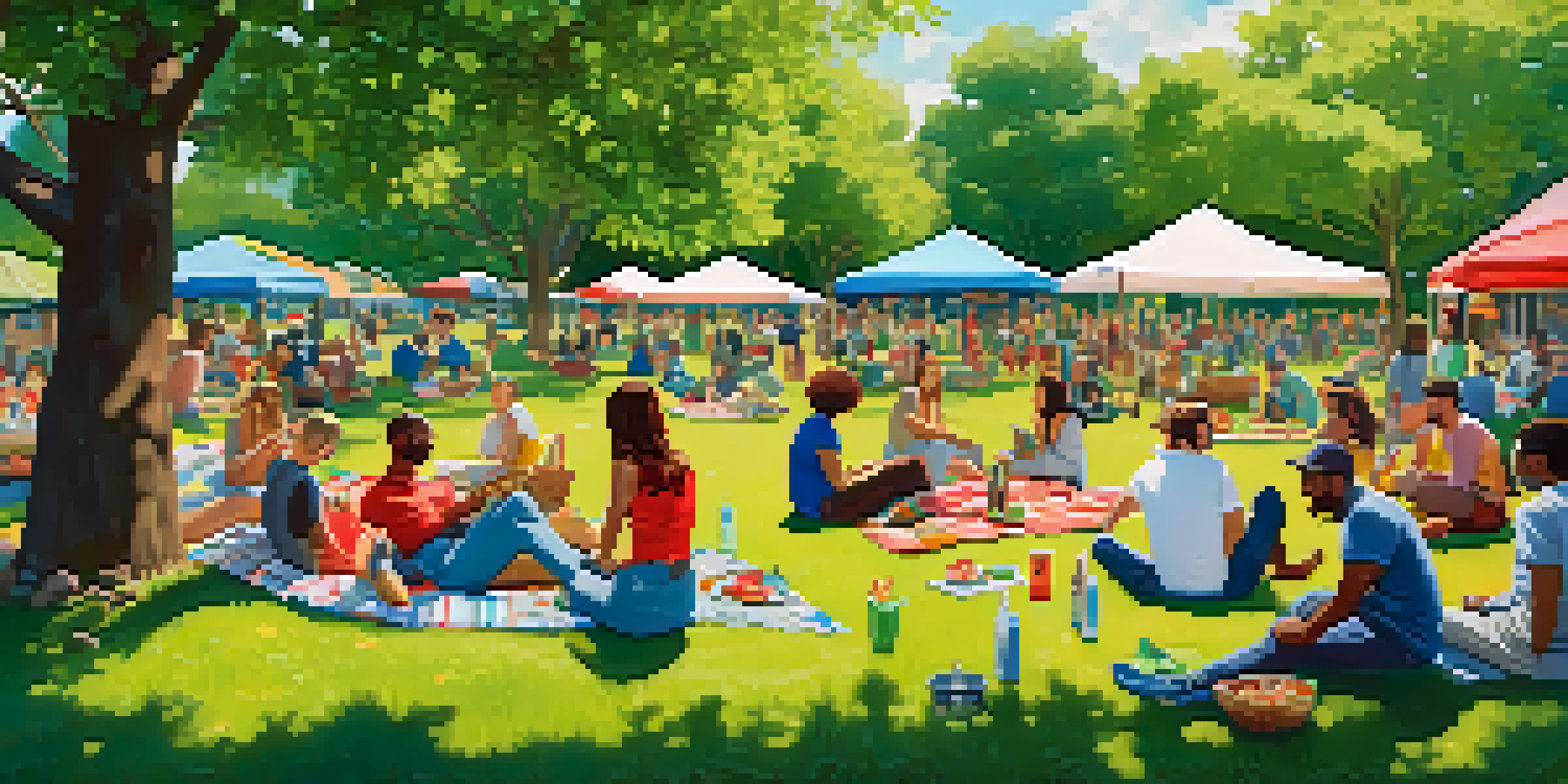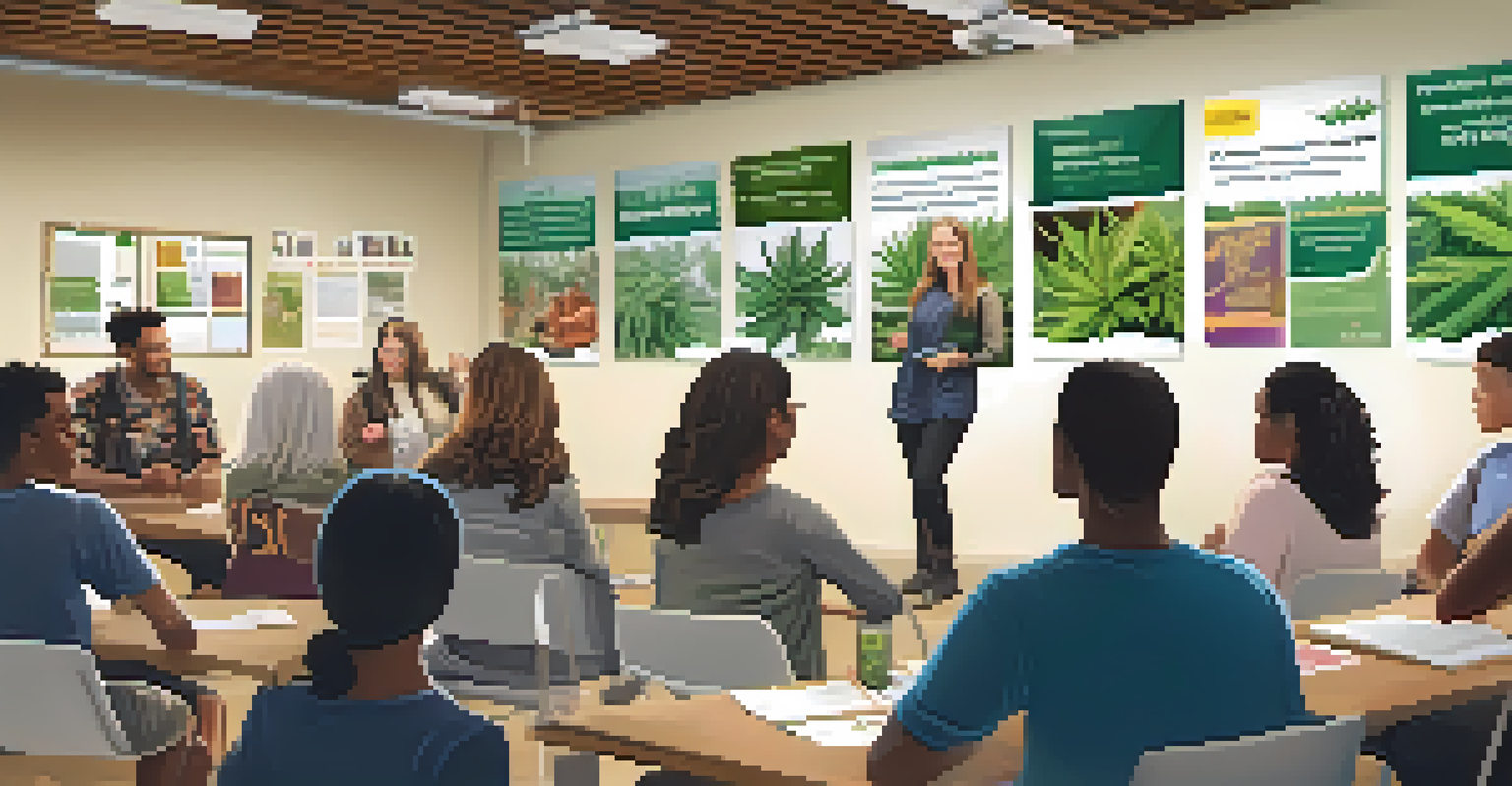Understanding Marijuana Use in Urban Public Spaces Today

The Evolving Attitude Towards Marijuana in Cities
Over the past few decades, public perception of marijuana has shifted significantly. Once seen as a taboo, it is now often viewed through a lens of acceptance and normalization, especially in urban areas. This change can be attributed to various factors, including legalization movements and increasing awareness of cannabis's medicinal benefits.
Marijuana is not a drug. Marijuana is an herb and a flower. God put it here. If he didn’t want it to be here, he would have put it in the middle of a road.
As cities embrace this new mindset, they are also adapting their policies to reflect the evolving attitudes. Legalization has led to regulated dispensaries in many urban environments, making marijuana more accessible to residents. This not only impacts how people view marijuana but also influences social interactions in public spaces.
However, with this acceptance comes new challenges. Urban planners and local governments must grapple with the implications of public marijuana use, balancing the rights of users with the concerns of non-users. Understanding these dynamics is crucial for fostering a harmonious urban atmosphere.
Legal Frameworks Governing Public Marijuana Use
The legal status of marijuana varies greatly from one city to another, creating a complex landscape for users. In some urban areas, marijuana use is fully legalized, allowing for public consumption, while in others, it remains heavily regulated. This patchwork of laws can lead to confusion for both users and law enforcement.

For instance, cities like San Francisco have embraced marijuana use, permitting consumption in certain public spaces. In contrast, other areas may impose strict penalties for public use, reflecting the ongoing debate about marijuana's place in society. Such legal frameworks not only dictate user behavior but also shape community norms.
Shifting Perceptions of Marijuana
Public attitudes towards marijuana have transformed from taboo to acceptance, particularly in urban areas.
Understanding these laws is essential for anyone engaging with marijuana in urban settings. Users must be aware of local regulations to avoid fines or legal repercussions, while cities must continuously evaluate their policies to address public health and safety concerns.
Public Spaces: Where Marijuana Use Thrives
Urban parks, festivals, and public gatherings have become hotspots for marijuana use in cities that allow it. These spaces often serve as social hubs where individuals can come together and share their experiences with cannabis. This communal aspect can foster a sense of belonging among users, contributing to a more vibrant urban culture.
The only thing that makes a drug a drug is the way society reacts to it.
However, the high visibility of marijuana use in these public settings can create tensions with non-users. Some individuals may feel uncomfortable or even threatened by the presence of marijuana, leading to calls for stricter regulations. Finding a balance between public enjoyment and community comfort is a growing concern for urban planners.
As cities navigate these challenges, innovative solutions are emerging. Designated consumption areas or events specifically catering to cannabis users are becoming more common, allowing for enjoyment while minimizing conflicts with non-users. This approach reflects a broader trend of inclusivity in urban public spaces.
Impacts of Marijuana Use on Urban Communities
Marijuana use in urban public spaces carries both positive and negative impacts on communities. On one hand, it can contribute to economic growth through cannabis-related businesses, such as dispensaries and cafes. This influx of revenue can support local services and infrastructure, benefiting the entire community.
On the other hand, increased visibility of marijuana use can lead to concerns about public safety and health. Communities may worry about marijuana-related incidents, particularly among younger populations or those who may misuse it. Addressing these concerns while promoting responsible use is essential for community well-being.
Complex Legal Landscape
Marijuana laws vary significantly across cities, creating confusion for users and challenges for local enforcement.
Ultimately, the impact of marijuana use on urban communities is complex and multifaceted. Open dialogue among residents, policymakers, and health professionals is vital to navigate these challenges and ensure that the benefits of cannabis legalization are shared by all.
The Role of Education and Awareness in Responsible Use
Education plays a crucial role in promoting responsible marijuana use in urban areas. As more people become aware of the potential effects of cannabis, they can make informed decisions about their consumption. Public awareness campaigns can help demystify marijuana, addressing common misconceptions and encouraging safe practices.
For instance, educational initiatives can focus on the importance of moderation and understanding individual tolerance levels. By providing resources about responsible use, cities can help mitigate the risks associated with marijuana, fostering a culture of safety and respect in public spaces.
Moreover, engaging local communities in discussions about marijuana can empower residents to take an active role in shaping policies and norms. Encouraging dialogue among users, non-users, and local leaders can create a more inclusive environment, ultimately benefiting everyone.
Health Considerations Surrounding Public Marijuana Use
The health implications of marijuana use in urban public spaces cannot be overlooked. While many advocate for its benefits, particularly in therapeutic contexts, there are also concerns regarding its effects on public health. Issues such as secondhand smoke exposure and impaired judgment can arise in environments where marijuana is consumed openly.
Public health officials are increasingly focusing on these concerns, calling for regulations that protect non-users from potential harm. This includes the establishment of smoke-free zones or restrictions on public consumption in certain areas. Balancing personal freedoms with community health is a delicate challenge that urban planners must address.
Balancing Use and Community Health
While marijuana use can boost local economies, it also raises public health concerns that require careful management.
Furthermore, ongoing research into the long-term effects of marijuana use will help inform future policies. As our understanding of cannabis continues to evolve, so too must our approach to its use in urban environments, ensuring that public health remains a priority.
Future Trends: Marijuana Use in Urban Public Spaces
Looking ahead, the trends surrounding marijuana use in urban spaces are likely to evolve as societal attitudes and laws continue to change. As more cities adopt progressive stances on cannabis, we may see an increase in social acceptance and designated areas for public use. This could lead to a more structured approach to marijuana consumption in urban environments.
Moreover, innovations in cannabis products and consumption methods may also shape how marijuana is used in public. For example, the rise of edibles and vaporization may offer alternatives that reduce the impact of secondhand smoke, addressing some public health concerns. These developments could encourage more responsible consumption practices.

Ultimately, the future of marijuana use in urban public spaces will depend on collaboration among users, local governments, and health advocates. By working together, these stakeholders can create inclusive environments that respect individual rights while prioritizing community well-being.